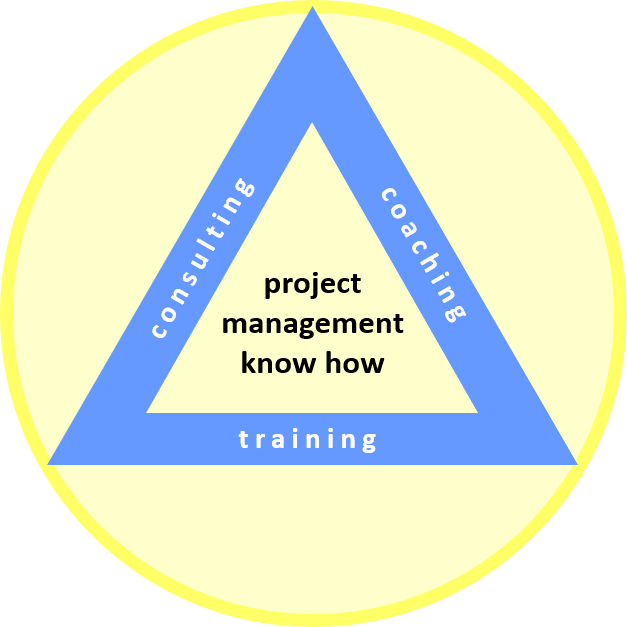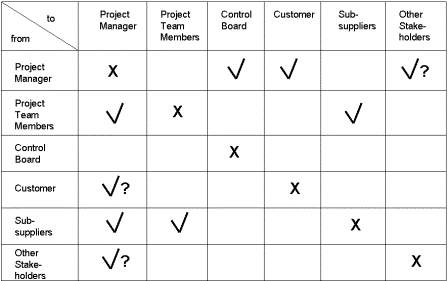- Home
- Planning Continued
- Project Communications Plan
Project Communications Plan
Published: 2009-05-20
Last updated: 2022-03-16
The project communications plan tells us who is communicating with
whom about what, verbally and in writing. In the sub-section that covers
contract management, we indicated that it is essential to create
evidence about everything that is going on in our project in
implementation and closure phase:
- Work progress
- Events that interfere with our original project plans
- Necessary changes or deviations to the plans
- Additional work
- Occurred risks and consequences
The best way to create this evidence is to have all our project communications in written reports, notes, or meeting minutes. Some of these documents we create on a regular basis, some just when necessary. All of them go into our project documentation.
The Project Communications Plan in a Matrix
It is best practice to plan all project communications in form of matrices. For the regular work progress it could look like the following example.
We need this kind of communications plan for every area in which we need reports. Thus, we create a project-specific reporting system that must be harmonized with our organization's reporting system. This aspect needs some serious consideration since all reports should have only one source, the project database. Wherever possible, we build reports automatically by linking the report content to our project database content. In the section Free Downloads, we offer some templates for project status reports, risk analysis reports, problem reports, a project communication plan, and others.
Those area-specific communications plans outline also our agreed plan of escalation.
Especially for the events that imply changes to the project plans it is
useful to plan that escalation: who should talk to whom first, second,
third, and so on, in any problematic situation?
The combination of all of the plans for project communications with the plan of project meetings and project controlling tools shapes a powerful project information system, including a project reporting system.
If we store all project plans, the project communications, i.e. all the reports, project-related correspondence, notes, any other records, and all the meeting minutes electronically in one project database we obtain a very useful project documentation system, our electronic project handbook.
This handbook will also serve as a source for all the project presentations we have to deliver to the project management team, control board, customer, sub-suppliers, and other stakeholders.
Traditional PM
Learning Path Navigation
|
|
|
Return to Project Planning Continued
Return from Project Communications Plan to Home Page
|
|
|


Your Comments
Have your say about what you just read! Leave me a comment in the box below.